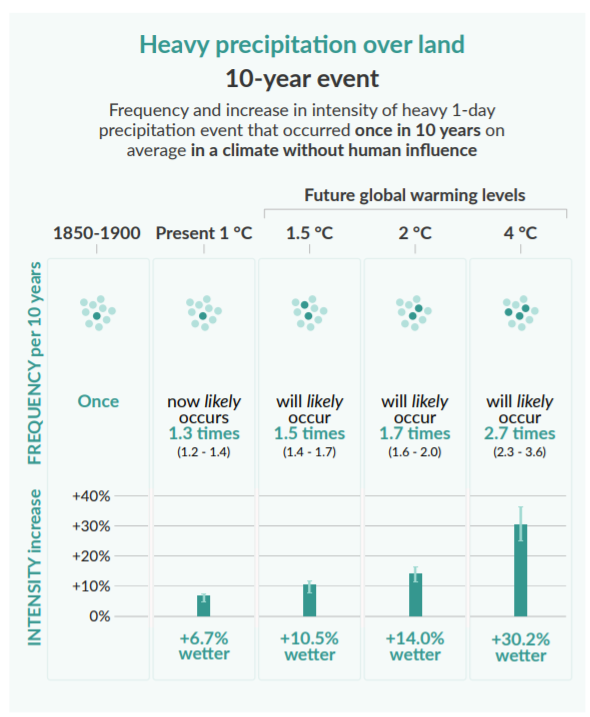The latest IPCC report puts the facts on the table with its ‘code red’ language hitting the headlines globally. A wakeup call for governments, businesses and citizens to reduce emissions and mitigate further climate change. It’s also a reminder of why we must invest in flood resilience and adaptation and focus attention on vulnerable communities already living with the impacts of climate change.
Last week the latest report from the Intergovernmental Panel on Climate Change (IPCC) was released. The report which looks at the physical science of climate change is the first instalment of the IPCC’s Sixth Assessment Report.
The findings come as no surprise to those of us who conduct research on climate change or natural hazards, or who work closely with communities affected.
Climate change means more and worse floods

A warmer climate will intensify very wet (and very dry) weather, climate events, and seasons – leading to more floods in many parts of the world.
The more global warming we create, the more intense floods we are likely to see.
Rising sea levels as a result of climate change will also contribute to increased flood risk in coastal cities and communities, especially where higher sea levels are combined with heavy rainfall or extreme river-flow events.
Projections showing the impact different levels of global warming will have are a stark reminder for urgent action and a step change in ambition from developed countries.
COP26 is an opportunity for global leaders to match the scale of the crisis with an ambitious and comprehensive package of solutions which reduce vulnerability among communities already living with the impacts of climate change.
Invest in flood resilience and save lives
It’s clear that climate change is already negatively impacting the population. The globe is warming, extreme weather and floods are getting more frequent, intense, and unpredictable even in the best case scenarios presented by IPCC.
Flooding, as a natural hazard, affects the largest number of people across the globe. Climate change is increasing coastal flood zones and rising populations means many vulnerable people have no choice but to live in flood prone areas. This will only increase over time.
It’s becoming increasingly important to invest in flood resilience. By reducing the risk of a flood turning into a disaster both lives and resources are saved.
The Zurich Flood Resilience Alliance works with communities to enhance their flood resilience. Local people often know best what action to take in order to reduce risk and build resilience and need the resources to do so. This working paper collates our experience of, and recommendations for, getting finance to local levels where it can have significant impact.
Increase and target climate change adaptation finance
Our research shows that not only is climate change adaptation finance insufficient, it also isn’t reaching those who need it the most. The $100 billion climate finance commitment must be fulfilled with at least half invested in adaptation.

Build resilience to current and future risk
The projections in the IPCC report show that it is not enough to consider current levels of risk. We must build resilience to more extreme, and more frequent events than we’re currently used to as climate change will make these more likely.
Investments in infrastructure, agriculture, development need to be “future proof” – climate-smart and risk informed.
Hazard protection infrastructure must be built with capacity to cope with a warmer and wetter climate than today. Nature based solutions or mixed approaches using both grey and green infrastructure with multiple benefits will be part of the solution.
National governments should step up ambition in their National Adaptation Plans, ensuring that flood resilience is made a priority and that disaster laws and policies address both current and future risks.
What needs to happen next?
The Alliance calls on all governments to make long term commitments to reduce climate risk for their most vulnerable citizens, increase funding for adaptation and reduce red tape so that the principles of locally led adaption will lead to appropriate, locally informed flood resilience plans and actions.

Hopewell Zheke says:
I like the emphasis on building in capacities already within communities, combine that with science and technologies and of course right policies and regulations we will have more resilient communities